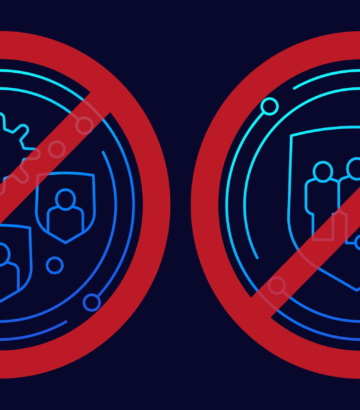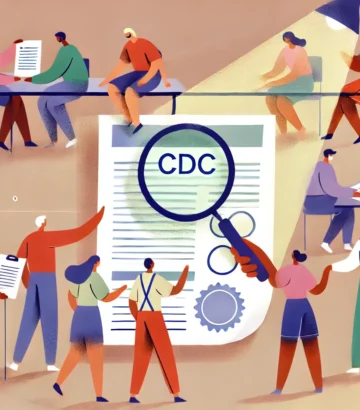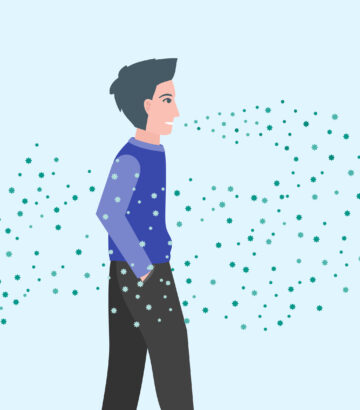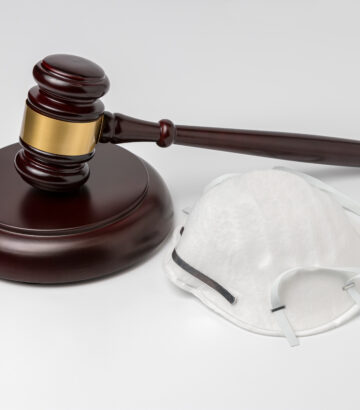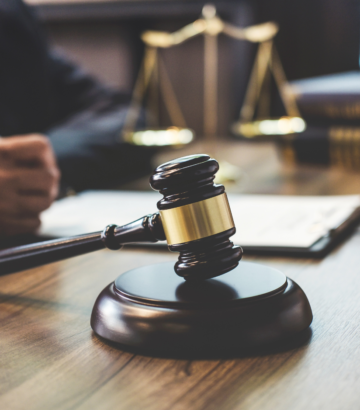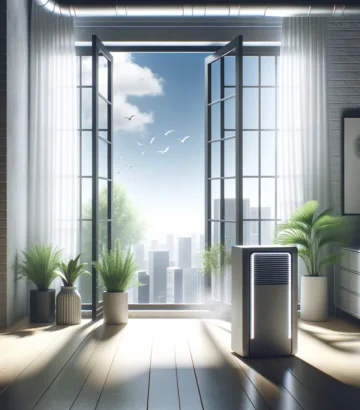Belgium Clean Air Law: A Law to Improve Indoor Air Quality in Enclosed Spaces Open to the Public
This is an auto-translation of the original law in French and Dutch.
01.12.2022 – Moniteur Beige
LAWS, DECREES, ORDINANCES AND REGULATIONS
FEDERAL PUBLIC SERVICE PUBLIC HEALTH, SAFETY OF THE FOOD CHAIN AND ENVIRONMENT
6 NOVEMBER 2022. – A Law to Improve Indoor Air Quality in Enclosed Spaces Open to the Public
PHILIP, King of the Beiges,
To all, present and future, Greetings.
The House of Representatives has adopted and we sanction the following:
CHAPTER I. – Introductory Provision
Article 1. The present Law regulates a matter referred to in Article 74 of the Constitution.
CHAPTER 2. – Definitions and Objectives
Art. 2. For the application of the present Law and of its implementing decrees, the following definitions shall apply
1° Open to the public: space whose access is not limited to the family sphere or purely to the professional sphere;
2° Enclosed space: interior space closed from its environment by walls, doors or doorways and equipped with a ceiling or a floor;
3° CO2 concentration: quantity of CO2 present in the air. The CO2 concentration is expressed in ppm by volume;
4° Air quality measurement device: device that measures at least the concentration of CO2;
5° Owner: natural person, legal entity or public authority that has the right to use, enjoy and dispose of the enclosed space open to the public. The owner has all powers, subject to restrictions imposed by laws, regulations or the rights of third parties;
6° Operator: natural or legal person who is responsible and in charge of organizing and managing the enclosed space open to the public;
7° Air purification system: technology that removes or inactivates certain pollutants from indoor air;
8° Label: set of information provided in a structured way on an enclosed place open to the public that is relevant for evaluating/monitoring indoor air quality within the framework of the present Law;
9° Aeration: process of letting in a quantity of fresh air for a short period of time by opening an exterior window or door;
10° Polluted air: indoor air that is polluted by pollutants from people, materials or equipment present, maintenance or heating, ventilation and cooling systems themselves;
11° Ventilation: process by which fresh outdoor air is continuously supplied to a place to remove polluted air. This can be achieved by natural or mechanical means;
12° Certifier: legal or natural person approved by public authorities who implements the controls of Article 6, second paragraph;
13° FPS Public Health: Federal Public Service for Public Health, Food Chain Safety and Environment;
14° Workplaces: places as defined in Article 16, 10°, of the Social Penal Code;
15° Risk analysis: process by which aspects of risk to air quality are identified. This includes both aspects that improve indoor air such as ventilation and air purification and those that deteriorate air quality such as contamination by the presence of people, building materials, appliances and equipment, maintenance of indoor air handling equipment and the quality of the supplied outdoor air.
16° Action plan: actions to be taken to respond to each of the points identified by the risk analysis, in the short, medium and long term, in order to systematically improve indoor air quality.
CHAPTER 3. – Reference Levels for Indoor Air Quality
Art. 3. § 1. Reference level A corresponds to a CO2 concentration in the premises that is generally less than 900 ppm or a minimum ventilation and air purification rate, as stipulated in paragraph 3 of this Article, of 40 m3 per hour per person, of which at least 25 m3 per hour per person is ventilation with outside air.
Reference level B is a CO2 concentration in the premises that is generally less than 1200 ppm or a minimum ventilation rate with outside air of 25 m3 per hour per person.
If measurements show that the outside concentration exceeds 400 ppm of CO2, the difference between 400 ppm and the CO2 concentration of the outdoor air introduced into the enclosed place open to the public can be taken into account.
§ 2. The King may, by royal decree, discussed in the Council of Ministers, inter alia on the basis of scientific evidence, formulate additional reference levels or provide other reference standards for the existing reference levels, taking into account the nature of an activity that takes place in an enclosed place open to the public. If necessary, the King may request an opinion or a scientific study on these reference levels from the indoor air quality platform referred to in Article 11 and, where appropriate, the platform may formulate an opinion or request a scientific study. As soon as the composition and the operation of the platform referred to in Article 11 have been formalized, the King shall request the above-mentioned opinion or a scientific study from the platform. The opinion is not binding.
§ 3. The King shall determine by royal decree, discussed in the Council of Ministers, the requirements and methods for determining air purification systems, including the determination of relevant pollutants, in order to know the effects of these systems on indoor air quality, potential nuisances, and installation conditions.
§ 4. The King shall determine by royal decree, discussed in the Council of Ministers, the requirements and methods for determining ventilation systems in order to know the effects of these systems on indoor air quality, potential nuisances, and installation conditions.
CHAPTER 4 – Obligations and Responsibilities
Art. 4. For any enclosed space open to the public, the following obligations must be respected:
- the use of an air quality measurement device;
- the elaboration and the provision of a risk analysis;
- the development and provision of an action plan if the risk analysis reveals the need for corrective action or actions;
- the application for certification provided for in Article 6;
- the provision and communication of the label by display or any other means as soon as the certification referred to in point 4 of this Article has been obtained;
- the operation of the enclosed spaces open to the public under the same or at least equivalent technical conditions as those existing at the time of obtaining the label, taking into account the nature of the activity that takes place in the enclosed space open to the public.
The King shall determine by royal decree, discussed in the Council of Ministers, which are the enclosed spaces open to the public that are subject to the obligations of the Law.
He shall also determine the conditions for the proper use of air quality measurement devices, the content, availability and modalities of the risk analysis and action plan, as well as the exemptions from the obligations of the first paragraph of this Article.
Art. 5. The obligations of Article 4, first paragraph, apply as described below:
The owner of the enclosed space open to the public is obliged to make available all relevant documentation on the ventilation and air purification systems in place and, where appropriate, to cooperate in the maintenance of the installations and, if necessary, to allow the certifier access to the installations.
The operator is responsible for the application of Article 4 in the enclosed spaces open to the public.
CHAPTER 5. – Certification
Art. 6. If no certification or label is available or requested, the operator must apply for certification.
Without prejudice to the tasks and powers of the competent inspection services, the certifier verifies the implementation of the obligations referred to in Article 4, first paragraph, 1°, 2°, 3° and 5° and determines the effective performance of ventilation and/or air purification systems in place. The certifier submits his analysis to the service designated by the King, which is the competent authority issuing the label.
The King shall determine by royal decree, discussed in the Council of Ministers, the accreditation procedure for certifiers, the accreditation conditions for certifiers to ensure they possess the necessary qualifications, the minimum content of the inspection, the rhythm of the inspections of the enclosed places open to the public by the certifiers, how to communicate the results to the competent authority, the methodology and modalities of certification, the content of the label, the placement and design of the label, as well as exemptions to these obligations. The King shall also determine by royal decree, discussed in the Council of Ministers, how the financing of the certification system costs is organized. The King shall also determine by royal decree, discussed in the Council of Ministers, additional rules concerning how and under what conditions certifiers perform their analyses.
CHAPTER 6 – Protection of Personal Data
Art. 7. § 1. The King shall determine by royal decree, discussed in the Council of Ministers, the roles and responsibilities of different actors in the processing of personal data within the framework of Articles 4, 5, 6, 8, and 9. This data is managed by a computerized database. The services referred to in Article 8, § 1, first paragraph and § 2, second paragraph, have access to this database. Consultations of this database are recorded.
§ 2. The categories of personal data processed in accordance with the purposes specified in the first paragraph of this Article are as follows:
- For the processing of personal data in the context of the certification of the enclosed space open to the public, carried out by a certifier at the request of the operator of the enclosed space open to the public, as provided for in Articles 4 and 6 of the present Law:
1° Identification data of the certifier;
2° Identification data of the operator;
3° Identification data of the owner;
4° Contact details of the operator;
5° Contact details of the owner;
6° IP address of the owner or the operator who registers the certification;
7° Address of the enclosed space open to the public.
- For the processing of personal data in the context of obtaining accreditation for certifiers as provided in Article 6 of the present Law, the following categories of personal data are processed:
1° Identification and address of the certifier and, where applicable, its contact persons;
2° In the event that additional categories of personal data are required on the basis of those determined by the King in accordance with Article 6 of the present Law, these additional categories of personal data may be determined by the King by royal decree, discussed in the Council of Ministers. - For the processing of personal data in the context of inspections referred to in Article 8 of the present Law, the categories of personal data are determined by the relevant provisions of the Social Penal Code and of the Law of 24 January 1977 on the protection of the health of users with regard to foodstuffs and other products.
- For the processing of personal data in the context of the imposition of an administrative fine, as referred to in Article 9 of the present Law:
1° Identification, contact details and address of the operator and / or owner;
2° Additional categories of personal data may be determined by the King by royal decree, discussed in the Council of Ministers.
§ 3. The processing of personal data mentioned in the second paragraph of this Article is carried out for the following categories of persons:
- The owner of the enclosed space open to the public and, if necessary, his contact person;
- The operator of the enclosed space open to the public and, if necessary, his contact persons;
- The certifier and, if applicable, his contact persons.
§ 4. The personal data referred to in this Article shall be kept for as long as they are required for the purposes of the present Law. No later than 20 years after the last use of such personal information for the purposes specified in the first paragraph of this Article, such personal information shall be erased. The King may, by royal decree, discussed in the Council of Ministers, shorten the retention period of the personal data referred to in this Article.
CHAPTER 7. – Inspections and Sanctions
Art. 8. § 1. Without prejudice to the powers of the judicial police officers, the supervision of the present Law and its implementing decrees is entrusted, only within the scope of their competence, to the contractual and statutory inspectors and controllers of the Inspection Service of the General Directorate of Animals, Plants and Food of the FPS Public Health.
In order to carry out the supervision, the contractual and statutory inspectors and controllers of the Inspection Service of the General Directorate of Animals, Plants and Food of the FPS Public Health have the powers referred to in Articles 11 and 11bis of the Law of 24 January 1977 relating to the protection of consumer health with respect to foodstuffs and other products.
§ 2. Without prejudice to the powers of the judicial police officers, the infractions to the provisions of this Law and its implementing orders, at workplaces closed to the public, are searched for, ascertained and sanctioned in accordance with the Social Penal Code.
Social inspectors appointed by the King have the powers referred to in Articles 23 to 49 of the Social Penal Code when they act on their own initiative or on request in the context of their mission of information, advice and surveillance relating to the respect of the provisions referred to in paragraph 1.
The reports drawn up by the social inspectors appointed by the King for the offences observed in the workplaces that are closed to the public are processed in accordance with the procedure provided for in Article 68 of the Social Penal Code.
Art. 9. § 1. Violations of the present Law or its implementing orders, established by the services mentioned in Article 8, § 1, are punishable by a criminal fine of 100 to 1,000 euros.
Without prejudice to the application of the penalties provided for by Articles 269 to 274 of the Penal Code, is punishable by imprisonment for fifteen days to six months and a criminal fine of 600 to 6,000 euros or one of these penalties only, the person who obstructs or opposes visits, inspections, investigations, controls, hearings, document consultations, sample taking, gathering of evidence, the person who does not respect the measures of coercion taken by the contractual and statutory inspectors and controllers or seizure or other by persons authorized to search for and ascertain infringements of the present Law and the orders taken in execution thereof, as well as the person who opposes this, the person who insults or threatens the aforementioned persons and the person who refuses to present an official identification document.
§ 2. The reports issued by the Inspection Service of the FPS Public Health, or by the police services, shall be processed in accordance with the procedure provided for in the present Law.
§ 3. The report by the services mentioned in Article 8, § 1, is sent to the public prosecutor and a copy is sent to the official designated by the King to impose an administrative fine. The public prosecutor decides whether or not to prosecute. Criminal proceedings exclude the application of an administrative fine, even if an acquittal ends them.
§ 4. The public prosecutor has a period of six months from the day of receiving the report to notify his decision to the official referred to in paragraph 3. If the public prosecutor renounces to bring criminal proceedings or fails to notify his decision within the fixed period, the official referred to in paragraph 3, decides, after having given the person concerned the opportunity to present his means of defense, whether it is appropriate to propose an administrative fine for the infringement.
§ 5. The decision of the official referred to in paragraph 3 shall be motivated and shall determine the amount of the administrative fine, which may not be higher than half of the maximum criminal fine referred to in Article 9, first paragraph, and nor lower than half of the minimum of the same criminal fine.
An appeal against this decision may be lodged with the Council of State.
The administrative fines imposed as a result of the reports drawn up by the departments referred to in Article 8, first paragraph, shall be paid into the Raw Materials and Products Fund.
The decision of the official, referred to in paragraph 3, is notified to the person concerned by registered letter at the same time as an invitation to pay the fine within the period set by the King. This notification shall extinguish the public action.
The additional decrees referred to in Article 1, first paragraph, of the Law of March 5, 1952 on additional decrees on criminal fines are also applicable to these administrative fines.
§ 6. If the person concerned fails to pay the fine and the costs of expertise within the set time limit, the official referred to in paragraph 3 continues the payment of the administrative fine.
§ 7. No administrative fine may be imposed five years after the fact of an infringement of the provisions of the present Law.
However, the acts of investigation or prosecution, carried out within the time limit determined in the first paragraph, interrupt the course of the proceedings. Such acts shall start a new period of equal duration, even with regard to persons not involved in them.
§ 8. Within six months after the entry into force of the present Law, the President of the Federal Public Service for Public Health and the President of the Federal Public Service for Employment, Labour and Social Dialogue shall conclude a memorandum of understanding on the distribution of tasks and the exchange of information on the controls and sanctions of the present Law.
Art. 10. § 1. In Book 2 of the Social Penal Code, a Chapter 13 is inserted entitled “Improvement of indoor air quality in enclosed workplaces open to the public”.
§ 2. In Chapter 13 of Book 2 of the same Code, inserted by § 1, an Article 239 is inserted as follows:
“Art. 239. Improvement of indoor air quality in enclosed workplaces open to the public.
§ 1. Is punishable by a level 3 penalty:
1° The owner of the place, his agent or his representative who, in the enclosed workplaces open to the public, has committed a violation of Article 5, paragraph 2, of the Law of November 6, 2022 on the improvement of indoor air quality in enclosed places open to the public and its implementing decrees;
2 ° The operator, his employee or his representative who, in the enclosed workplaces open to the public, has committed a violation of Article 5, paragraph 3, of the Law of November 6, 2022 and its implementing decrees;
3° The certifier who, in the enclosed workplaces open to the public, has violated Article 6 of the aforementioned Law of November 6, 2022 and its implementing decrees.
§ 2. For the purposes of this Article, “workplaces” shall mean: “workplaces” as defined in Article 16, 10.”.
CHAPTER 8. – Indoor Air Quality Platform
Art. 11. The platform for indoor air quality is created in order to improve the knowledge of the indoor air quality, to support the improvement and prevention of risk situations and to provide policy advice both in Belgium and at the international level. The platform is a point of contact, which federated entities can voluntarily join. The platform is also a point of contact to facilitate the continuation of scientific research on indoor air quality. The platform does not have access, in this context, to the personal data contained in the computerized database referred to in Article 7. The King may determine the composition and operation of this platform.
CHAPTER 9. – Entry into Force
Art. 12. The present Law shall enter into force on the tenth day of its publication in the Moniteur Beige, with the exception of Article 4, first paragraph, 1. to 3., which shall come into force twelve months after the entry into force of the Law, and Article 4, first paragraph, 4. and Article 6, first paragraph, which shall come into force on 1 January 2025.
The King may postpone, by royal decree, discussed in the Council of Ministers, the dates of entry into force of Article 4, first paragraph, 1. to 4. and of Article 6, first paragraph, until 1 January 2026 at the latest, which is the final date of entry into force.
We enact the present Law, order it to be sealed with the Seal of State and published in the Moniteur Beige.
Given in Brussels, on November 6, 2022.
PHILIPPE
For the King:
The Minister of Public Health,
F. VANDENBROUCKE
The Minister of Justice,
V. VAN QUICKENBORNE
Seal of the State: The Minister of Justice,
V. VAN QUICKENBORNE
Note
(1) House of Representatives (www.lachambre.be) Documents. – 55K2820
Full report: 27 October 2022.
FEDERAL PUBLIC SERVICE PUBLIC HEALTH, FOOD CHAIN SAFETY AND ENVIRONMENT
23 NOVEMBER 2022. – Royal Decree qualifying the supra-regional care missions and the local care missions of the local clinical hospital networks and determining the geographical offer of the local care missions of the local clinical hospital networks
PHILIP, King of the Beiges,
To all, present and future, Greetings.
Considering the Law on hospitals and other health care institutions, coordinated on July 10, 2008, Article 14/4, paragraphs 1 and 3;
Considering the opinion of the Federal Council of Hospitals, given on 16 December 2021 and 21 April 2022;
Considering the opinion of the Inspector of Finance, given on March 24, 2022;
Considering the concurrence of the Secretary of the Budget, dated May 4, 2022;
Considering the regulatory impact analysis, carried out in accordance with Articles 6 and 7 of the Law of 15 December 2013 on various provisions concerning administrative simplification;

